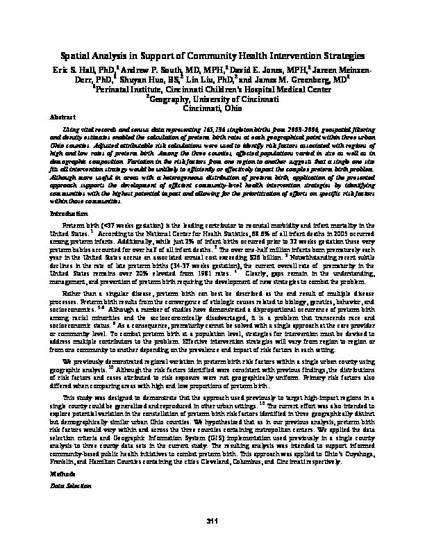
Article
Spatial Analysis in Support of Community Health Intervention Strategies
AMIA Annual Symposium Proceedings
(2012)
Abstract
Using vital records and census data representing 165,136 singleton births from 2003-2006, geospatial filtering and density estimates enabled the calculation of preterm birth rates at each geographical point within three urban Ohio counties. Adjusted attributable risk calculations were used to identify risk factors associated with regions of high and low rates of preterm birth. Among the three counties, affected populations varied in size as well as in demographic composition. Variation in the risk factors from one region to another suggests that a single one size fits all intervention strategy would be unlikely to efficiently or effectively impact the complex preterm birth problem. Although more useful in areas with a heterogeneous distribution of preterm birth, application of the presented approach supports the development of efficient community-level health intervention strategies by identifying communities with the highest potential impact and allowing for the prioritization of efforts on specific risk factors within those communities.
Keywords
- Spatial Analysis,
- Premature Birth,
- Maternal and Child Health
Disciplines
Publication Date
2012
Citation Information
Eric Hall, A. South, D. E. Jones, J. Meinzen-Derr, et al.. "Spatial Analysis in Support of Community Health Intervention Strategies" AMIA Annual Symposium Proceedings Vol. 2012 (2012) p. 311 - 320 Available at: http://works.bepress.com/david-jones3/3/
